
- >
- >
- Environment, nutrition and health – Anna Bergström's research group
- Genetic and epigenetic factors in asthma and allergy – Cilla Söderhäll's research group
- Cardiovascular epidemiology – Team Bruna Gigante
- Neurobiology of Stress and Treatment Response – Juan Pablo Lopez group
- Vascular Surgery – Ulf Hedin's research group
- Annika Bergquist group
- Acute myeloid leukemia – Sören Lehmann group
- Human tissue-resident NK cells – Niklas Björkström group
- Neuropsychoimmunology – Sophie Erhardt's research group
- Diabetes epidemiology – Sofia Carlsson's research group
- Stroke - Acute Intervention and Secondary Prevention – Niaz Ahmed's research group
- Molecular muscle physiology and pathophysiology – Lanner Lab
- Community nutrition and physical activity (CoNPA) – Liselotte Schäfer Elinder's research group
- Inflammatory bowel disease (IBD) – Research group Eduardo Villablanca
- CRISPR-based drug target discovery in cancer and autoimmunity – Research group Fredrik Wermeling
- Emergency care – Kristian Ängeby's research group
- Clinical Cancer Epidemiology – Research group Karin Ekström Smedby
- Cancer prevention and screening – Johannes Blom's research group
- Somatosensation – Patrik Ernfors group
- DNA replication & Cancer Genetics – Lemmens Group
- Laboratory testing for alcohol and drugs of abuse – Anders Helander research
- Anaesthesia and Intensive care – Rebecka Rubenson Wahlin/Anna Schandl's research group
- Jonas Fuxe Group
- SCF ubiquitin ligases, cell cycle, transcription and cancer development – Olle Sangfelt's Group
- Toxicological Mechanisms – Emma Wincent's research group
- Stem Cells in Tissue Homeostasis and Regenerative Medicine – Jonas Frisén's Group
- Urology – Olof Akre's research group
- The New World of Work – Theo Bodin's research group
- Midbrain dopaminergic neuron development
- Research group Michael Fored
- Neurobiology of pain & Therapeutics – Saida Hadjab Group
- Risk assessment – Mattias Öberg's research group
- Research groups in cell and molecular biology
- Developmental Psychology: Digital Media and ADHD – Lisa Thorell's research group
- Research groups in education and pedagogy
- Research groups in biostatistics and probability theory
- ESSI – Emotion regulation, Self-injury, Suicide, and Intervention – Johan Bjureberg's research group
- Medical ethics – Gert Helgesson's group
- Treatment of substance use disorders – Johan Franck's Research Group
- Sex hormones and sex differences in diseases of the brain – Ivan Nalvarte's research group
- Cilia in the brain – and their connections to human brain disorders – Peter Swoboda's research group
- Evidence-based methods in autism and ADHD – Tatja Hirvikoski's research group
- Long-Term Outcomes after Perioperative and Intensive Care – Max Bell research group
- Accelerating drug discovery using molecular modeling and machine learning – Andreas Luttens' group
- Pediatric Healthcare Science – Cecilia Bartholdson research group
- Digital Strategies for AF Detection and Outcome Prevention – Emma Svennberg Team
- Translational Pharmacology – Kent Jardemark's team
- Global and Sexual Health (GloSH) – Anna Mia Ekström's research group
- Medical Inflammation Research – Rikard Holmdahl group
- Neuro-infections & Neuroinflammation – Federico Iovino Group
- Clinical Chemistry and Blood Coagulation – Jovan Antovic's research group
- Translational research on human microbial infections and its consequences – Anders Sönnerborg's group
- Human tissue-resident NK cells in homeostasis and disease – Nicole Marquardt team
- Etiology and pathogenesis of type 1 diabetes – Malin Flodström-Tullberg group
- Oxygen sensing, cancer and intratumor heterogeneity – Schlisio Lab
- Genetic Epidemiology of Neuroinflammatory Disorders – Ingrid Kockum's research group
- Retina – Anders Kvanta's research group
- Glaucoma – Pete Williams' research group
- Leadership in healthcare and academia – Mia von Knorring's group
- Luminal gastroenterology – Research group Charlotte Hedin
- Identifying molecular signals in the genital mucosa that determine susceptibility to sexually transmitted infections – Research group Kristina Broliden
- Coronary heart disease – Research group Per Svensson
- Educational development – Matti Nikkola's group
- Post-transcriptional regulation in mitochondria – Joanna Rorbach group
- Cellular diversity is generated during development, neuronal identity – Johan Holmberg's Group
- Lipid handling in health and cardiometabolic disease – Research group Carolina Hagberg
- Renal glomerulus biology and diseases – Jaakko Patrakka group
- Research group Caroline Palm Apergi
- Precision pathology and tumor heterogeneity – Johan Hartman's Group
- Lifelong Learning in Health Care Contexts – Terese Stenfors' group
- Translational Arthritis Research – Team Bence Réthi
- Stem cells, Developmental Biology, Heart Disease, Heart Development, Genetics, Biotechnology – Kenneth R. Chien's group
- Urological cancer – Lars Egevad's Group
- The ubiquitin/proteasome system in neurodegenerative diseases and cancer – Nico Dantuma's Group
- Experimental alcohol- and drug dependence research – Vladana Vukojević research group
- Chronic inflammatory disease epidemiology – Research group Johan Askling
- Statistical and bioinformatics analyses of high-throughput molecular data – Yudi Pawitan's research group
- Urban environment and children´s and youth health – Olena Gruzieva's research group
- Research groups in laboratory medicine
- Research groups in medical biotechnology
- Research groups in physiotherapy
- Breast cancer epidemiology – Kamila Czene's research group
- Research groups in human computer interaction
- Research group Liv Eidsmo
- Preventive Medicine – Susanna Larsson's research group
- Transition to adulthood for individuals with neurodevelopmental conditions – Ulf Jonsson's team
- Function and Health in Respiratory and Cardiovascular Conditions – Malin Nygren-Bonnier's research group
- Laboratory of lymphocyte biology – Team Taras Kreslavskiy
- Translational and clinical research in acute myeloid leukemia – Team Martin Jädersten
- CEREBRA – Susanne Palmcrantz's research group
- Tissue immunosurveillance by cytotoxic lymphocytes – Takuya Sekine team
- Physical activity and Sports medicine with focus on prevention – Hagströmer research group
- Receptor biology and signaling – Schulte Lab
- Neurobiology of Obesity – Alessandro Furlan group
- Upper GI Surgery – Jesper Lagergren's research group
- Sepsis and COVID-19 – Kristoffer Strålin Group
- Harnessing Neutrophils for Precision Cell Therapy against solid tumors – Roland Fiskesund Team
- Human T cell immunity to evolving viruses and cancers – Marcus Buggert group
- Neuroradiology - MRI physics – Stefan Skare's research group
- Wilhelm lab
- Inflammatory responses in cancer and autoimmunity – Mikael Karlsson's Group
- Cultural Medicine – Solvig Ekblad's unit
- Working life, ergonomics, psychosocial factors, and health – Research group Daniel Falkstedt
- Aging and health – Welmer's research group
- NK Cell Recognition – Klas Kärre Group
- Computational Breast Imaging – Fredrik Strand's Group
- Drug treatment – Erik Eliasson research group
- Neural differentiation as a strategy for neuroblastoma treatment – Marie Arsenian Henriksson Group
- Cancer immunotherapy – Mattias Carlsten group
- Cell-based immune therapy for cancer – Andreas Lundqvist's Group
- Basic molecular structure of human skin – Lars Norlén's research
- Reproductive, Perinatal and Pediatric Epidemiology – Research group Olof Stephansson
- Research group Erik Melén
- Research group Joel Nordin
- MINT – Klas Karlgren's team
- Translational breast cancer research – Theodoros Foukakis' Group
- Genes function and molecular bases of diseases – Research group Magdalena Paolino
- Homeostasis and tissue repair mechanisms in the mammalian system, pericytes, stem cells – Christian Göritz Group
- The Perinatal Epidemiology Lifecourse Lab – Team Neda Razaz
- Experimental Cancer Medicine (ECM)
- Research group Therese Djärv
- Molecular and cellular neuroendocrinology – Tibor Harkany group
- Neuropsychiatric disorders – Håkan Karlsson group
- Research groups in dermatology and venereal diseases
- Evidence-based practice: prevention, intervention and implementation – Pia Enebrink's research group
- Research groups in radiology and medical imaging
- Research groups in psychiatry
- Maria Eriksdotter research group
- Research groups in precision medicine
- Breast cancer surgery – Jana de Boniface's research group
- ICare – Ann Langius-Eklöf's research group
- Immunology and Chronic Disease – Johan Frostegård's research group
- Health in Everyday Life (HELD) – Susanne Guidetti's research group
- Center for Resuscitation Science – Jacob Hollenberg's research group
- Applied Developmental Neurobiology – Carl Sellgren research group
- Global Reproductive Outreach & Wellness (GROW) – Michael Wells
- Mats Marshall Heyman research group
- SLE/APS/Vasculitis group – Research group Aleksandra Antovic
- Development of autonomic control – Herlenius Research
- Maintenance and expression of mtDNA in disease and ageing – Nils-Göran Larsson Group
- Neuropharmacology - Movement Disorders – Per Svenningsson's research group
- Somatosensation & Gargalesis – Konstantina Kilteni group
- Signal Transduction – Ismael Valladolid Acebes' research group
- Microbiome and Infections – Piotr Nowak Research Group
- Immunological tolerance and transfusion immunology – Petter Höglund group
- Immunopathogenesis and new therapeutic strategies in tuberculosis – Susanna Brighenti group
- Pain and Brain Imaging – Karin Jensen's research group
- Susanne Nylén group
- Hand surgery – Maria Wilckes Research group
- Environmental impact on pulmonary host defence and chronic airflow obstruction – Anders Lindén's research group
- Rehabilitation, collaboration and aging – Elisabeth Rydwik's research group
- Tuberculosis Aerobiology – Antonio Rothfuchs group
- Oscar Fernandez-Capetillo group
- Diversity within the T cell response, T cell memory – Research group Carmen Gerlach
- Clinical and translational melanoma research – Hanna Eriksson's Group
- Meiotic chromosome segregation – Christer Höög's research group
- B cells and autoantibodies in rheumatic disease – Team Caroline Grönwall
- Precision medicine in lymphoid malignancies including CLL; from new targets to real-world assessments – Anders Österborg's Group
- Research group for Cancer evolution
- Jiri Bartek group
- Translational Cardiology (@TransCardio) – Research group Magnus Bäck
- Gene regulation, genome-wide experimental and computational techniques – Rickard Sandberg's Group
- The Helleday Laboratory focuses on harnessing defects in the DNA damage response and metabolism to develop novel therapies
- Small RNAs in cancer development – Weng-Onn Lui's Team
- Geriatric pharmacoepidemiology – Kristina Johnell's research group
- Molecular neurodevelopment and neuro-oncology – Ola Hermanson group
- Research groups in anesthesiology and intensive care
- Gastrointestinal epidemiology – Jonas Ludvigsson's research group
- Health inequalities and minority stress – Richard Bränström's research group
- Research groups in microbiology
- Research groups in orthopaedics
- Hereditary hematological malignancies – Bianca Tesi team
- Lars Holmgren's Group
- Substance use prevention – Johanna Gripenberg's research group
- Perioperative care – Ulrica Nilsson's research group
- Mechanisms behind HIV-1 latency and rebound – Peter Svensson's group
- ENGAGE- Enacting health and change through everyday activity – Patomella group
- Diagnosis and treatment of children with asthma and allergy: from molecular diagnosis to intervention – Jon Konradsen's research group
- Translational research in childhood cancer and histiocytic diseases – Nikolas Herold Research group
- Reproductive Health/Reproductive Medicine – Kristina Gemzell Danielsson's research group
- Malin Holzmann's research group
- Radiation therapy/ Radiation Oncology – Pehr Lind Group
- Reproductive endocrinology and metabolism – Elisabet Stener-Victorin's research group
- Tissue engineering – Magdalena Fossum team
- Inflammation and metabolism – Nicolas Pillon's team
- Neurobiology of Sensory Systems – François Lallemend group
- Experimental Traumatology Research Unit
- Genetic Modification of NK cells for Optimized Functions against Cancer – Arnika Wagner team
- NK cells in the development of adaptive immune responses – Benedict Chambers team
- Molecular pain research – Camilla Svensson's research group
- Brain Connectomics – Joana Pereira's research group
- Genomic Science and RNA Biology – Vicent Pelechano group
- Immunotherapy – Robert Harris' research group
- Infectious diseases/Venhälsan – Jaran Eriksen's research group
- Musculoskeletal disorders from a biopsychosocial perspective – Wim Grooten's research group
- Hjerling-Leffler group
- Respiratory and invasive infections and microbial pathogenesis – Birgitta Henriques-Normark Laboratory
- Multimodal Brain Imaging – Daniel Lundqvist's research group
- Obsessive - Compulsive and Related Disorders Across the Lifespan – David Mataix-Cols research group
- With a focus on proteins for better cancer treatments – Pär Nordlund's Group
- Precision cancer medicine and precision radiotherapy in lung cancer - from molecular mechanisms/biomarkers to clinical trials – Kristina Viktorsson's team
- Cancer Bioinformatics – Nick Tobin's Team
- Lipoproteins and the Immune System – Research group Stephen Malin
- Equity and Health Policy (EHP) – Ann Liljas' research group
- Effects of hypoxia in physiological and pathological contexts, Hypoxia Inducible Factors (HIF) – Randall Johnson's Group
- Chemistry II – Jesper Z. Haeggström group
- Genomic analysis of parasites and viruses, metagenomic sequencing – Björn Andersson's Group
- Translational control of cancer – Ola Larsson's Group
- Gastrointestinal Surgery KI SÖS – Gabriel Sandblom's research group
- Understanding the mechanisms behind hantavirus-mediated pathogenesis – Jonas Klingström group
- The Gynaecological research team – Elisabeth Epstein
- Understanding how life develops – Emma Andersson's Group
- Statistical methods in epidemiology – Paul Dickman's research group
- Neurons and Neural Networks – Ole Kiehn group
- Research groups in developmental biology
- Behavioral, Resilience and Digital Health in Pain – Rikard Wicksell’s research group
- Research groups in neurology
- Research groups in epidemiology, global public health and social medicine
- Nordic Brain Network – Miia Kivipelto's research group
- Resilience and mental health – Serhiy Dekhtyar group
- Forensic behavioral and neuroscience – Katarina Howner's Research Group
- Immune Engineering – Team Leo Hanke
- Chemical and physical exposure in the work environment and health – Jenny Selander's research group
- Mechanobiology of cardiac regeneration – Elif Eroglu's Group
- Tumors of the female genital organs – Miriam Mints' research group
- Psychoneuroimmunology – Mats Lekander's research group
- Mechanisms of malignant hematopoiesis – Pedro Moura team
- Neuroplasticity and Regeneration – Konstantinos Ampatzis group
- Paediatric cell and molecular biology – Hjalmar Brismar's research group
- Quantitative Biology of the Nucleus – Magda Bienko Group
- Cardiometabolic factors, brain aging, and dementia care – Weili Xu group
- Cognitive Neuroscience of Body and Self – Henrik Ehrsson Group
- Surgical Care Science – Pernilla Lagergren's research group
- Clinical and translational studies on viral hepatitis – Soo Aleman group
- Cell and Gene Therapy – Evren Alici group
- Personalized Medicine and Drug Development – Lauschke-lab
- Electrophysiological neuropharmacology – Göran Engberg's research group
- Mechanisms of Pain and Treatment – Eva Kosek's research group
- Functional (Epi)genomics of Neuroinflammatory Diseases – Maja Jagodic's research group
- Molecular basis of gene regulation of diseases – Carsten Daub's research group
- Health risk assessment methodology – Anna Beronius' group
- Medical genetics – Catharina Larsson's Group
- Translational Genetics of Neurodegenerative disease – Caroline Graff's research group
- Development, transcription factors, neurons, dopamine – Thomas Perlmann's Group
- Novel targeted therapies in cancer to overcome drug resistance – Katja Pokrovskaja Tamm's Team
- Clinical and translational research within lupus and autoimmunity – Team Ioannis Parodis
- Cell cycle, mitotic entry, and DNA-damage checkpoints – Arne Lindqvist's Group
- Breast Surgery – Irma Fredriksson's research group
- Laura Orellana's Group
- Research group Ali Mirazimi
- Early drug discovery research in chronic inflammatory diseases – Research group Michael Sundström
- Integrative Physiology – Juleen Zierath's research group
- Simon Elsässer group
- Clinical Neuroimmunology and Immunomodulation – Fredrik Piehl's research group
- Understanding mechanisms of vaccination – Research group Karin Loré
- Systems regenerative neurobiology – Enric Llorens Group
- Clinicial Cancer Genomics – Johan Lindberg's research group
- Jeanette Hellgren Kotaleski group
- Brain control of food intake and body weight – Björn Meister group
- Research groups in endocrinology and diabetes
- Research groups in gastroenterology and hepatology
- Research groups in neurosciences
- Research groups in respiratory medicine and allergy
- Caring in Community Care – Zarina Nahar Kabir's research group
- Molecular mapping of the nervous system in health and disease – Jan Mulder group
- Child and adolescent psychiatry – Jens Högström's research group
- Genetic mechanisms of ageing – Maria Eriksson's research group
- Digital Psychiatry – Philip Lindner's research group
- Synaesthesia, autism and perception – Janina Neufeld's team
- Vascular complications in cardiometabolic disease – Team Zhichao Zhou
- Research groups in odontology
- Neuroimmunovascular biology – Harald Lund's team
- Translational Molecular Imaging – Nordberg Lab
- NEUROPLASTICITY – DAGLIYAN GROUP
- Intracellular Mycobacterium Tuberculosis – Martin Rottenberg group
- Developmental and Translational Neurobiology – Cristiana Cruceanu's research group
- Microbiota–gut–brain axis and neurodevelopment – Rochellys Diaz Heijtz group
- Thoracic Surgery – Anders Franco-Cereceda's research group
- Electrophysiology – Mats Jensen-Urstad group
- Role of T cells in human host defense – Johan Sandberg group
- Germ cell biology and developmental programming in epigenetic inheritance of diseases – Qiaolin Deng's research group
- Unit for Bioentrepreneurship – Hanna Jansson's group
- Health informatics – Sabine Koch's group
- Cancer, rapid ageing and nutrition – Martin Bergö's research group
- Clinical radiation therapy – Åsa Carlsson Tedgren's Group
- TRANslational Theranostics Group – Thuy Tran
- Pathogenic pathways in Alzheimer Disease – Lars Tjernberg's research group
- Hematological and solid tumors – Research group Xu Dawei
- Developmental Neurogenomics – Michael Ratz's Group
- Notch signaling, ES cells, myogenic and vascular progenit breast cancer – Urban Lendahl's Group
- Particle toxicology – Hanna Karlsson's group
- Mitochondrial dysfunction in Alzheimer Disease – Maria Ankarcrona's research group
- Molecular pathology of the lung and pleura – Katalin Dobra's Group
- Late effects and cancer survivorship after diagnosis and treatment of aggressive lymphoma – Team Sandra Eloranta
- Research Group Anna Nopp
- Coding and non-coding RNAs in cancer – Per Hydbring's Team
- Research group Mikael Björnstedt
- Sister chromatid cohesion in DNA damage responses, DSB repair, Genome Integrity, Gene regulation – Lena Ström's Group
- Inborn Errors of Endocrinology and Metabolism – Anna Wedell's research group
- Functional Precision Medicine – Brinton Seashore-Ludlow's Team
- Understand skin using modern biology – Maria Kasper's Group
- Integrative Epidemiology – Fang Fang's research group
- Molecular Biometry – Roman Zubarev group
- Idiopathic pulmonary fibrosis (IPF) – Research group Magnus Sköld
- Molecular Neuroscience – Carlos Ibáñez group
- Research groups in psychology
- Research groups in forensic science
- Research groups in medical genetics and genomics
- Research groups in nursing
- Research groups in rheumatology and autoimmunity
- Genetic epidemiology of prostate and testicular cancer – Fredrik Wiklund's research group
- Systems biology of aging – Juulia Jylhävä's research group
- Aging – basic mechanisms and interventions – Christian Riedel's research group
- Embryonal, foetal and brain development – Juha Kere's research group
- Research groups in occupational therapy
- Growth and Cartilage Biology – Ola Nilsson's research group
- Infections and immunity in children with cancer – Anna Nilsson's research group
- Oxygenation, early resuscitation in trauma and drug treatment in cardiac arrest – Team Malin Jonsson Fagerlund
- Lars Karlsson team
- Sepsis and microcirculation – Sara Tehrani's research group
- Visual Neuroscience – Rune Brautaset's research group
- Chemicals and female fertility – Pauliina Damdimopoulou Research Group
- Molecular and cellular exercise physiology – The Ruas Lab
- Social Gerontology – Neda Agahi group
- Neural circuits of cognition – Marie Carlén group
- Colorectal Surgery – Anna Martling and Caroline Nordenvall's research group
- Myeloma group – Evren Alici's research group
- Medicine and history of science – Eva Åhrén's group
- Cardiometabolic diseases – Ping Chen research group
- Anders Mutvei research group
- Ocular Oncology and Pathology – Gustav Stålhammar's research group
- Clinical Neurophysiology – Charith Cooray's research group
- Regulation of Gene Expression during Viral Infection – Gerald McInerney Group
- Social and affective learning and decision-making – Andreas Olsson's research group
- Translational Breast Cancer Research: Long-Term Risk and Endocrine Treatment Benefit – Linda Lindström's Group
- Notch3 and the cerebral small vessel disease CADASIL – from molecular mechanisms to treatment strategies – Helena Karlström's research group
- Dementia and Multimorbidity – Dorota Religa's research group
- Diagnostic Radiology – Lennart Nedar's research group
- Cognitive Neuropsychiatry – Predrag Petrovic's research group
- Chemical carcinogenesis – Ulla Stenius' group
- Metal toxicology – Maria Kippler's research group
- Cellular Stress in Health and Disease – Federico Pietrocola's group
- Autophagy and cardiovascular disease – Team Ewa Ehrenborg
- Research group Birgitta Sander & Birger Christensson
- Innate Immune Regulation – Quirin Hammer team
- Genetics of tumor predisposition and progression in breast cancer – Svetlana Bajalica Lagercrantz's Team
- Implementation and Quality (IMPAQT) – Claudia Hanson's research group
- Structural and Biophysical Immunology – Research group Adnane Achour
- Ulrika Marklund group
- Sustainable work & occupational safety and health – Emma Brulin's research group
- Health Systems Leadership, Management, and Safety – Carl Savage's group
- Cell and Molecular Immunology - Research group Cecilia Söderberg Naucler
- Konstantinos Meletis group
- Petter Ljungman's research group- Health effects of the Ambient Environment
- Neuropsychology of music – Fredrik Ullén group
- Research groups in geriatrics and gerontology
- Research groups in nutrition and dietetics
- Research groups in sports and fitness sciences
- Prostate Cancer – Henrik Grönberg's research group
- Methods of health promotion in the workplace – Lydia Kwak's research group
- Autism and perinatal epidemiology – Sven Sandin research group
- Wengström's research group
- Modelling and simulation with applications to cancer epidemiology and health economics – Mark Clements' research group
- Health Technology Assessment – Monica Hultcrantz’s group
- Pediatric anesthesiology Stockholm – Per-Arne Lönnqvist's research group
- Prehospital Emergency Care – Veronica Vicente's Research Group
- The brain after surgery and trauma - neuroinflammation, cognitive impairment and dementia – Lars I Eriksson research group
- Personalized diet and medications for cognition – Garcia-Ptacek group
- Perpetration Prevention – Rahm and Joleby's research group
- SOLIID - Sustainable Organizational Learning, Innovation, Improvement and Development in Health and Social services – Monica Nyström's group
- Social Gerontology – Carin Lennartsson group
- Genetic and molecular basis of nervous system disorders – Andrea Carmine Belin group
- Chronobiology – Petrus lab
- Leukemic stem cells – Petter Woll group
- Nanomedicine and Spatial Biology – Teixeira Lab
- Global Disaster Medicine - Health Needs and Response – Johan von Schreeb's research group
- Translational cardiac and skeletal muscle physiology – Daniel Andersson's research group
- Neuroradiology – Staffan Holmin's research group
- Tumour genomics – Lauri Aaltonen's research group
- Neurobiology of Motor Actions – Abdel El Manira group
- Neuroinflammation in Alzheimer disease – Marianne Schultzberg research group
- Palliative Medicin – Linda Björkhem-Bergman's research group
- Nucleotide metabolism and molecular pharmacology – Sean Rudd's Group
- Cardiovascular Inflammation – Research group Peder Olofsson
- Mesenchymal stem cells – Katarina Le Blanc group
- Luigi De Petris' Team
- Autoimmunity and cancer – Research group Marie Wahren-Herlenius
- Atherothrombosis research – Team Nailin Li
- Precision cancer medicine – Olli Kallioniemi's group
- Research group Stephan Mielke
- Genetics of autoimmune diseases – Team Leonid Padyukov
- Lifestyle, health and pain in musculoskeletal disorders – Nina Brodin's research group
- Vascular Functions in Metabolic and CNS Diseases – Ulf Eriksson group
- Sarcoma Genomics – Felix Haglund de Flon's Group
- Team Helene Alexanderson
- Injury and Repair in the Immature Brain – Blomgren group
- Statistical methods for cancer patient survival – Therese Andersson's research group
- Individual differences in cognition – Agneta Herlitz’ research group
- Research groups in health economy, healthcare management and policy
- Research groups in reproductive medicine and gynaecology
- Research groups in structural biology
- Research groups in artificial intelligence
- Work environment, health and productivity – Christina Björklund's research group
- Predictive medicine – Mattias Rantalainen's research group
- Epigenetic regulation of leukemia and normal blood development – Andreas Lennartsson's research group
- Epigenetic mechanisms underlying metabolic-inflammatory diseases – Eckardt Treuter's research group
- The IMPACT research group – Marie Löf
- Stockholm Center for Health Economics (StoCHE) – Emelie Heintz's team
- Towards personalized physiology in Intensive Care – Team Johan Mårtensson
- Biophysics – Erdinc Sezgin's Lab
- War, crisis, and security studies
- Systems Medicine – Johan Björkegren research group
- Research group Kilian Eyerich
- Global infections – Research group Anna Färnert
- Translational Microbiome Research and Pandemic Preparedness – Lars Engstrand group
- EcoMind and biological pathways in cognitive aging – Debora Rizzuto group
- Circuits controlling Action and their Evolution – Sten Grillner group
- Mikael Rydén & Niklas Mejhert lab
- Understand Fundamental Immune Mechanisms to Develop New Treatments for Lung Diseases – Tim Willinger group
- Clinical Brain Imaging Methods – Anna Falk Delgado's research group
- Hyperbaric medicine – Peter Lindholm's research group
- Eye movements and vision – Tony Pansell's research group
- Lung toxicology – Lena Palmberg's research group
- The NeuroCardioMetabol Group – Thomas Nyström & Cesare Patrone
- Environmental and genetic factors influence on neurodevelopment – Sandra Ceccatelli group
- Skin wound healing – Research group Ning Xu Landén
- From development to disease: decoding stem cell programs for CNS repair – Erik Sundström's and Xiaofei Li's research group – Erik Sundström-Xiaofei Li group
- Neurodegenerative diseases and Aging – Daniel Ferreira Research Group
- Deep learning models of cancer mechanisms – Avlant Nilsson's Group
- Clinical Physiology – Marcus Carlsson's research group
- Molly Stevens group
- Molecular Mechanisms of Viral Oncogenesis – Maria G. Masucci's Group
- Björn Reinius group
- Quantitative principles in tumour biology – Jean Hausser's Group
- Bone biology – Sara Windahl Research group
- Research group Volkan Özenci
- Genetics and mechanisms of metals – Karin Broberg's research group
- Immunodeficiency Diseases – Lisa Westerberg Group
- Structural studies of fertilisation and zona pellucida module proteins – Luca Jovine's research group
- Tissue regeneration, focusing on fat cells (adipocytes) and obesity – Kirsty Spalding's Group
- Robert Månsson group
- Developmental and Regenerative Stem Cell Medicine – Lanner Lab
- Suicide and mental health lab – Vladimir Carli and Gergö Hadlaczky's group
- Medical, genetic and molecular decoding of neurodevelopmental disorders – Kristiina Tammimies' research group
- Working hours, Recovery and Safety in working life. – Anna Dahlgren's research group
- Research groups in hematology
- SOMIND: Somatic, Mental, and Neurodevelopmental Conditions – Agnieszka Butwicka's research group
- Research groups in drug abuse and addiction
- Research groups in biomaterials science
- Mikael Adner's research group
- Chemical and functional neuroanatomy of pain and stress systems – Tomas Hökfelt group
- Spider silk biology for biomedical applications – Anna Rising's research group
- Cancer Epidemiology and Causal Inference – Research group Maria Feychting
- Protein biochemistry for development of novel medical treatments – Janne Johansson's research group
- Healthcare financing and organization – Clas Rehnberg's group
- Space and environmental physiology – Rodrigo Fernandez-Gonzalo group
- Ninib Baryawno research group
- Neurohormonal Basis of Physiological and Maladaptive Expressions of Survival Behaviors – Stefanos Stagkourakis group
- Breast cancer precision medicine – Marike Gabrielson's research group
- Atopic dermatitis – Research group Emma Johansson
- Reproductive endocrinology and metabolism – Angelica Lindén Hirschberg's research group
- Genetic basis for B and T cell recognition and function – Gunilla Karlsson Hedestam Group
- Cognitive Aging and Mental Health – Erika Jonsson Laukka Group
- Molecular and circuit neuropharmacology – Gilberto Fisone group
- The role of immunity in shaping adipose tissue development and metabolism – Jurga Laurencikiene group
- Chronic myeloid malignancies – Johanna Ungerstedt group
- Studies of tissue microbiology and immunology – Mattias Svensson group
- Sten Linnarsson group
- Balance, gait, exercise and physical activity in neurological diseases – Franzén Group
- Global Health Pharmacology and Therapeutics (GH-Pharma) – Eleni Aklillu's research group
- Real-world-data in Multiple Sclerosis – Anna Glaser's research group
- Suicidology and transcultural psychiatry – Marie Dahlin's research group
- Experimental and Clinical Neuroendocrinology – Maria Petersson's research group
- Cutting edge translational research of common and rare skin disease – Research group Jakob Wikström
- Alzheimer’s Disease Risk Factors & Sex-Specific Mechanisms – Silvia Maioli's research group
- Frontal lobes and cognitive failure – Wahlund's research group
- Clinical Pharmacology – Research group Rickard Malmström
- Molecular Vascular Medicine – Team Lars Maegdefessel
- Molecular endocrine pathology – Christofer Juhlin's Group
- Presynaptic mechanisms – Lennart Brodin group
- Malignant melanoma – Hildur Helgadottir's Group
- Precision strategies to eradicate heterogeneous tumor cells in pediatric cancer – Kasper Karlsson's Group
- Respiratory and systemic immune responses in human pulmonary viral infection and inflammation – Research group Anna Smed Sörensen
- Genetic toxicology – Kristian Dreij's group
- Identifying new molecular targets for the treatment of motor neuron diseases – Eva Hedlund's research
- Epigenetics - basic mechanisms and disease – Karl Ekwall's research group
- Forensic medicine – Henrik Druid's Group
- Ageing and Health – Karin Modig's research group
- Perception Neuroscience – Johan Lundström's research group
- Computational medicine and bioinformatics – Trung Nghia Vu's research group
- Toxicology – Bertrand Joseph´s Research group
- Etiology, prevention and treatment of eating disorders – Ata Ghaderi's research group
- Research groups in medical ethics and history of science
- Research groups in occupational and environmental health
- Research groups in surgery
- Research groups in biophysics
- Research Group Johan Ärnlöv
- Narrative in health and social care – Research group
- Cellular and molecular mechanisms underlying intervertebral disk formation and Diversity and plasticity of adipose tissue cell niche – Meng Xie's research team
- Neuroimmunology of cancer – Sébastien Talbot
- Pediatric Systems Immunology – Petter Brodin's research group
- Microvascular oxidative stress in the triad of cardiovascular, metabolic and renal disease – Mattias Carlström group
- Cardio-renal epidemiology – Juan-Jesus Carrero's research group
- Novel treatment approaches for neuroblastoma – Malin Wickström Näsman research group
- Cancer immune and gene therapy – Rolf Kiessling's Team
- Amanda Andersson Rolf's Group
- Movement, Activity and Health – Eva Broström's research group
- Discovery and Elucidation of the mechanisms of Action of Tumour Selective Compunds – Sonia Lain Group
- Multidimensional health in old age – Amaia Calderón-Larrañaga group
- Molecular epidemiology of aging – Sara Hägg's research group
- Long noncoding RNA in the adipocyte – Alastair Kerr Research Group
- Leukemia niche – Hong Qian group
- Disease mechanisms in severe acute bacterial infections – Anna Norrby-Teglund group
- Gastrointestinal pediatric surgery – Tomas Wester's research group
- Developmental biology and regenerative medicine – Igor Adameyko's research group
- Experimental audiology – Barbara Canlon's research group
- Translational Immunology in Neuroinflammation – Olivia Thomas' research group
- Sickness absence, health and living conditions – Emilie Friberg's research group
- Health Systems and Policy – Cecilia Stålsby Lundborg's research group
- Endocrinology and autoimmune diseases – Research group Sophie Bensing
- Health economics of Alzheimer disease and other dementias – Linus Jönsson Group
- Epidemiology: Diet, contaminants and health – Agneta Åkesson's research group
- Neuronal circuits of anxiety – Janos Fuzik group
- Paediatric rheumatology – Research group Helena Erlandsson Harris
- Cardiovascular Epidemiology – Karin Leander research group
- Molecular cardiology – Research group Francesco Cosentino
- Björn Högberg group
- Regeneration mechanisms – Andras Simon's Group
- Assessing and managing chemical risks – Linda Schenk's research group
- Autoimmunity and adaptive immunity in rheumatic disease – Research group Vivianne Malmström
- Rheumatic systemic diseases – Team Marie Holmqvist
- Heart failure with reduced and preserved ejection fraction. Clinical and translational aspects. – Research group Lars Lund
- Christoph Ziegenhain Group
- Psychiatric epidemiology – Paul Lichtenstein's research group
- Structural basis of RNA biogenesis – Martin Hällberg's research group
- Hematopoietic Stem Cell Biology Group – Sten Eirik W. Jacobsen Lab
- Psychiatric Genetic Epidemiology – Sarah Bergen's research group
- Renal Medicine at Novum (Baxter Novum) – Bengt Lindholm Group
- Research groups in biochemistry
- Psychological treatment: internet and exposure – Brjánn Ljótsson's research group
- Research groups in immunology
- Research groups in ophthalmology
- Research groups in urology and nephrology
- Research groups in sociology
- Integrative physiology – Juleen Zierath and Anna Krook
- Hormonal signalling and cancer – Cecilia Williams research group
- Cell Biology of Cancer – Staffan Strömblad's research group
- Chronic inflammation with focus on rheumatology and cancer – Research group Per-Johan Jakobsson
- Health services and social work research – Lena Von Koch's research group
- Nitrate-nitrite-NO pathway in health and disease – Eddie Weitzberg's research group
- Human Translational Genetics – Stefano Romeo Group
- Clinical Pancreatology – Miroslav Vujasinovic research group
- Hemostasis and Thrombosis – Mika Skeppholms research group
- Amyotrophic Lateral Sclerosis - ALS – Caroline Ingre's research group
- Saving the brain in critically ill neonates – Ulrika Ådén's research group
- Regulatory Transcriptomics – Kutter group
- NeuroimAging – Grégoria Kalpouzos group
- Section of Pharmacogenetics – MIS-lab
- Biological and clinical aspects of the myelodysplastic syndrome – Magnus Tobiasson group
- Human innate lymphoid cell lab – Jenny Mjösberg group
- Viruses and their interactions with the immune system – Sara Gredmark Russ group
- Protein degradation pathways – Helin Norberg's research group
- Translational Auditory Neuroscience – Christopher Cederroth's research group
- Neuroradiology: Neurodegeneration and Neuroinflammation – Tobias Granberg's research group
- Tumor Immunology and Immunotherapy Group – Dhifaf Sarhan
- Causal inference in epidemiologic research – Arvid Sjölander's research group
- The role of autophagy in Aβ metabolism and neurodegeneration in Alzheimer’s disease – Per Nilsson group
- Darreh-Shori's Lab/group
- PROCOME – Hanna Öfverström's and Marta Roczniewska's group
- Molecular brain imaging of neurodegenerative disorders – Andrea Varrone's research group
- Alcohol and Drug Epidemiology – Mats Ramstedt's research group
- Anxiety related disoders and genetics – Christian Rück's research group
- Psychotherapy Research – Tobias Lundgren's research group
- Human olfaction – Mats J. Olsson's research group
- Tissue stem cells and aging – Pekka Katajisto's Group
- SOSVASC – David Lindström's research group
- Yenan Bryceson group
- Epidemiology of sarcoidosis and systemic lupus erythematosus – Team Elizabeth Arkema
- Viral genomics and metagenomics – Tobias Allander Group
- Defining the metabolic signatures of tissue resident human ILCs – Chris Tibbitt team
- Human papillomavirus which causes cervical cancer – Research Group Karin Sundström
- Research groups in bioinformatics and systems biology
- Cognitive epidemiology – Bo Melin's research group
- Gilad Silberberg group
- Research groups in oto-rhino-laryngology and logopaedics
- Immunoregulation of environmental-induced airway inflammation in severe asthma and bronchiectasis – Apostolos Bossios's research group
- Multimorbidity and frailty in older adults – Davide Liborio Vetrano group
- Psychiatric and pharmaco-epidemiology – Zheng Chang's research group
- Charting normal and malignant hematopoiesis – Team Joakim Dahlin
- Molecular mechanisms governing oxygen homeostasis in development, evolution, and disease – Kragesteen's research group
- Precision Medicine – Infrastructure team
- Research groups in medical epigenetics and epigenomics
- Medical sensors and diagnostics – Team Onur Parlak
- Uncovering the molecular and physical principles governing early embryonic division and nuclear organization – Jan Ellenberg Group
- Nanoscale lipid flux architecture – Veijo Salo’s Research Group
- Pediatric and respiratory epidemiology – Catarina Almqvist Malmros' research group
- Sexual and Reproductive Health – Marie Klingberg-Allvin research group
- Angiogenesis, Cancer, Metabolic disease, Cardiovascular disease, Eye disease – Yihai Cao Group
- Cardiovascular and psychosocial health in resilience and healthy brain aging – Chengxuan Qiu Group
- Translational Psychiatry – Catharina Lavebratt's research group
- Rare metabolic liver diseases, coagulation and hepatocellular carcinoma – Stål and Wahlin research group
- Blood Engineering – Vanessa Lundin group
- Development, regulation and function of human innate lymphoid cells throughout life – Jakob Michaëlsson group
- Clinical Genetics – Richard Rosenquist Brandell's research group
- Oxysterols – Ingemar Björkhem and Ulf Diczfalusy research
- Molecular exercise physiology – Carl Johan Sundberg's research group
- Large-scale Network Connectivity in the Human Brain – Peter Fransson's research group
- Environmental physiology
- The Systems Virology Lab – Ujjwal Neogi
- Cancer Cell Invasion – Marco Gerling's research group
- Molecular brain imaging, neuropsychopharmacology, depression and anxiety disorders – Johan Lundberg's research group
- Organization and operation of postural neuronal networks in health and disease – Tatiana Deliagina group
- Paediatrics – Anna Lindholm Olinder's research group
- Petzold group
- Molecular and epidemiological studies of ascending aortic aneurysms – Research group Hanna Björck
- Prevention, Intervention and Mechanisms in Public Health (PRIME Health) – Cecilia Magnusson's research group
- The interplay between circadian 3D genome organization and metabolism in complex diseases – Anita Göndör's Group
- Reconstructive Plastic Surgery and Global Surgery – Jenny Löfgren's research group
- Real-world effectiveness of psychopharmacological treatment – Jari Tiihonen's Research Group
- Center for Heart Failure and Arrhythmia – Gianluigi Savarese
- Sports Medicine – Anders Stålman's research group
- Women's Mental Health Epidemiology – Donghao Lu Lab
- The SMC complexes, chromosome dynamics and stability – Camilla Björkegren's Group
- Extracellular vesicles in immunity – Research group Susanne Gabrielsson
- Precision Cancer Medicine in Lung Cancer - Preclinical, Translational & Clinical Research – Simon Ekman's research group
- RNA-guided DNA repair and cancer – Marianne Farnebo's research group
- Laboratory of translational fertility preservation – Kenny Rodriguez-Wallberg's group
- Research groups in cancer and oncology
- Common Mental Disorders and Behavioral Medicine in Primary Care – Erik Hedman's research group
- Neuronal membrane trafficking – Oleg Shupliakov group
- Research groups in paediatrics
- Biostatistics With Focus on Statistical Methods in Cancer Epidemiology and Screening – Keith Humphreys' research group
- Research groups in nanotechnology
- Gastroenterology – clinical epidemiology and clinical trials – Research group Ola Olén
- Precision engineering of T cells in vivo for therapies of cancer – William Nyberg team
- Protein Misfolding and Prevention by Molecular Chaperones in Cancer and Neurodegenerative Disease – Gefei Chen's research group
- Social Perception – Arvid Guterstam's research group
- Neuroepidemiology – Kyla McKay and Katarina Fink's research group
- Experimental growth research – Lars Sävendahl's research group
- Spinal circuits for whole-body motor coordination – Laurence Picton group
- Clinical HIV epidemiology and comorbidity – Christina Carlander Research group
- Head and neck pathology – Anders Näsman's Team
- Elias Arnér research group
- Gynecologic Cancer – Henrik Falconer's research group
- B cell biology, from immunodeficiency to cancer – Pan Hammarström Lab
- Developmental Cognitive Neuroscience – Torkel Klingberg group
- Rare Diseases – Ann Nordgren och Anna Lindstrand's research group
- Research on steatotic liver disease – Hagström Group
- Stem Cell Size – Jette Lengefeld Team
- Natural Killer Cell Biology and Cell Therapy – Kalle Malmberg group
- Mast Cell Biology – Research group Gunnar Nilsson
- Traumatic Brain Injuries and Neuromonitoring – Eric Thelin's research group
- Medical Statistics team
- Augmented Neurosurgery – Erik Edström and Adrian Elmi Terander's research group
- Molecular neurophysiology – Karima Chergui's research group
- Injuries Social Aetiology and Consequences (ISAC) – Lucie Laflamme's research group
- Unconventional T cells in human pathology – Andrea Ponzetta team
- Inflammation and immune regulation during infection – Team Christopher Sundling
- Orthopaedics – Anders Enocson's research group
- Endothelial dysfunction in atherosclerotic cardiovascular disease – Research Group John Pernow
- Clinical epidemiology of multiple sclerosis and inflammatory joint diseases – Team Thomas Frisell
- Cancer stem cells and clonal structure in acute lymphoblastic leukemia – Martin Enge's Group
- Mitochondrial metabolism in health and disease – Anna Wredenberg group
- Biomolecular Medicine and Advanced therapies- focus on delivery of RNA therapeutics – Research group Samir EL Andaloussi
- Antimicrobial resistance – Christian Giske research group
- Tissue immunology – Research group Helen Kaipe
- Health Economics and Economic Evaluation – Niklas Zethraeus' group
- Neuroimage affective treatment and individual variability laboratory (NATIV Lab) – Kristoffer Månsson's research group
- Stem Cell Biology – Jonas Muhr's Group
- VIVAC research group: Vaccines and Immunotherapies against Viruses And Cancer – Matti Sällberg
- The passage of the mRNP particle through the nuclear pore – Bertil Daneholt's research
- Pharmacoepidemiology – Team Björn Pasternak
- Therapeutic Immunology and Transfusion Medicine – Michael Uhlin’s research group
- Musculoskeletal conditions and sports medicine research – Iben Axén's research group
- Research groups in cancer and oncology
- Nutritional neuroscience – Janina Seubert's Research Group
- Tobias Karlsson's group
- Research groups in pharmacology and toxicology
- Precision Psychiatry – Lu Yi's research group
- Research groups in medicinal chemistry
- Agneta Richter-Dahlfors group
- Cancer epidemiology with focus on breast cancer and applied biostatistics – Anna Johansson's research group
- Autism, ADHD and other neurodevelopmental conditions – Sven Bölte's research group
- Twinstudies on health conditions and sickness absence – Pia Svedberg's research group
- Psychiatric comorbidity and intergenerational transmission of mental health problems – Erik Pettersson's research group
- Neuronal circuits of the Basal Ganglia – Maya Ketzef group
- Psychological Interventions - innovation, improvement and implementation – Viktor Kaldo's research group
- Susanna Ranta team
- Neurovascular diseases – Christina Sjöstrand research group
- Gonçalo Castelo-Branco Group
- Pediatric Neuroimmunology and Epilepsy – Ronny Wickström's research group
- Explores various cell signaling phenomena and their impact on critical biological and medical processes using advanced light microscopy – Per Uhlén Group
- Neural stem cells – Anna Falk group
- Diabetes and Associated Complications – Sergiu-Bogdan Catrina's research group
- Myelodysplastic syndromes – Eva Hellström Lindberg group
- Immune responses to human viral infections and cancer – Hans-Gustaf Ljunggren group
- Health services research in neurological conditions – Charlotte Ytterberg's research group
- Neurosurgery – Mikael A. Svensson's research group
- Westman neuroimaging group
- Stemcells and Inflammation – Lou Brundin's research group
- Pharmacological nitric oxide research – Jon Lundberg's research group
- Epidemiology of Psychiatric Conditions, Substance use and Social Environment (EPiCSS) – Emilie Agardh's & Renee Gardner's Research Group
- Autoimmune neurology – Jakob Theorell team
- Reducing antibiotic resistance – Research group Pontus Nauclér
- Orthopaedics – Karl Eriksson's research group
- Endocrine Surgery – Robert Bränström's research group
- Paediatrics – Inger Kull's research team
- Cancer proteogenomics - from methods to clinical applications – Janne Lehtiö's Group
- Cellular metabolism – Research group Roland Nilsson
- Primary Immunodeficiency, Innate Immunity and Antimicrobial peptides – Peter Bergman Research Group/The AMP-group
- Clinical Virology and Immunology – Annika Karlsson's research group
- Jussi Taipale Group
- Global Child Health and the Sustainable Development Goals – Tobias Alfvén's research group
- Topoisomerases, chromatin biology and cancer – Laura Baranello's group
- Stem cells and neural development – Johan Ericson's Group
- Vascular morphogenesis and function in health and disease – Lars Jakobsson group
- Epidemiology and Public Health Intervention Research (EPHIR) – Jette Möller's research group
- Epithelial stem cells in development and disease – Maria Genander's group
- Research Group Gustaf Edgren
- Drug discovery, pancreatic beta-cell regeneration – Olov Andersson's Group
- Unit of Biostatistics – Matteo Bottai
- Research groups in cardiology and cardiovascular diseases
- Sleep, cognition and health – John Axelsson's research group
- Research groups in infectious medicine
- Research groups in physiology and anatomy
- Cardiometabolic epidemiology and aging – Ida Karlsson's research group
- How the overview of research subjects is made
- Precision Cancer Control Group – Martin Eklund's research group
- Liver and monocyte remodelling in non-alcoholic fatty liver disease and cardiovascular disease – Rongrong Fan's research group
- Early childhood development and neurodevelopmental conditions – Terje Falck-Ytter's research group
- Mental health and social integration (Mente) – Ellenor Mittendorfer-Rutz's research group
- Mechanisms of protein aggregation and inhibition – Axel Abelein group
- Genetic and pharmacological epidemiology – Zeberg laboratory
- REACH – digital treatment and prevention – David Moulaee Conradsson's research group
- Mucosal immunology lab – Charlotte Thålin research group
- Stroke – Annika Lundströms research group
Neural circuits of cognition – Marie Carlén group
Our group researches on the prefrontal cortex and the cellular logic of cognition.
Latest research news
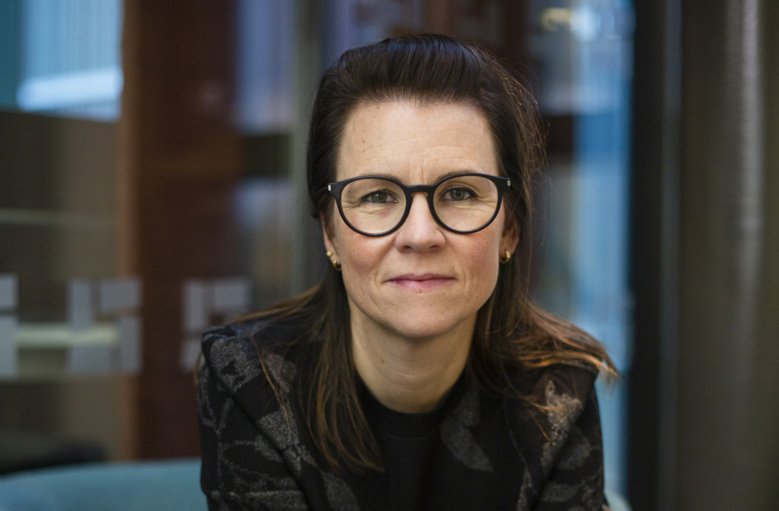 Photo: Martin Stenmark
Photo: Martin StenmarkMarie Carlén: She wants to decode the brain
 Photo: Stefan Zimmerman
Photo: Stefan Zimmerman"Funding from KAW gave the freedom to focus on complex research projects"
Meet KI researcher Marie Carlén, one of the speakers at the KAW jubilee symposium in Stockholm.
New light on mental disorders
 Photo: Pixabay
Photo: PixabayMore news from CarlenLab
 Photo: N/A
Photo: N/AFollow us
Working on cognition, interneurons, synchrony and behavior, in connection to psychiatry. But most of all on the prefrontal cortex. Follow Marie Carlén on X (formerly known as twitter).
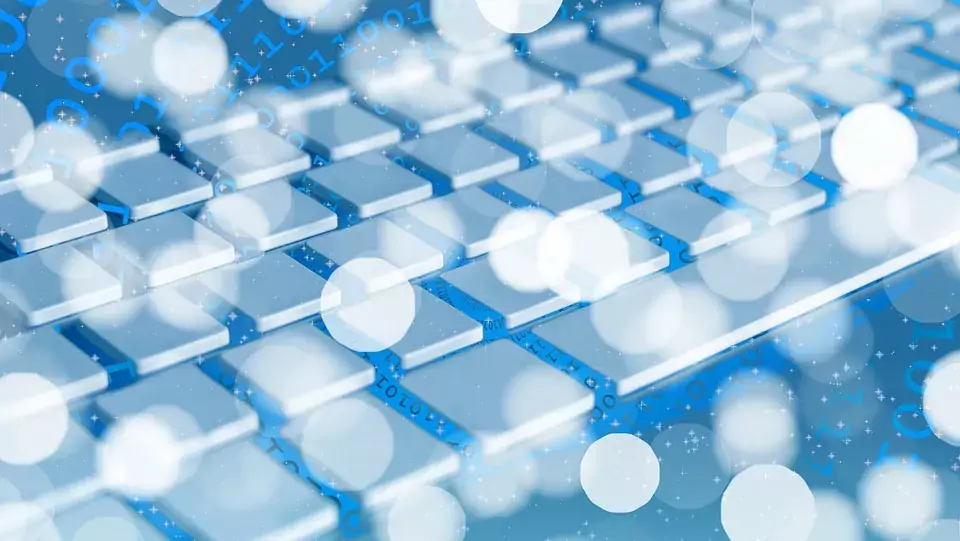 Photo: geralt
Photo: geraltData
Research focus
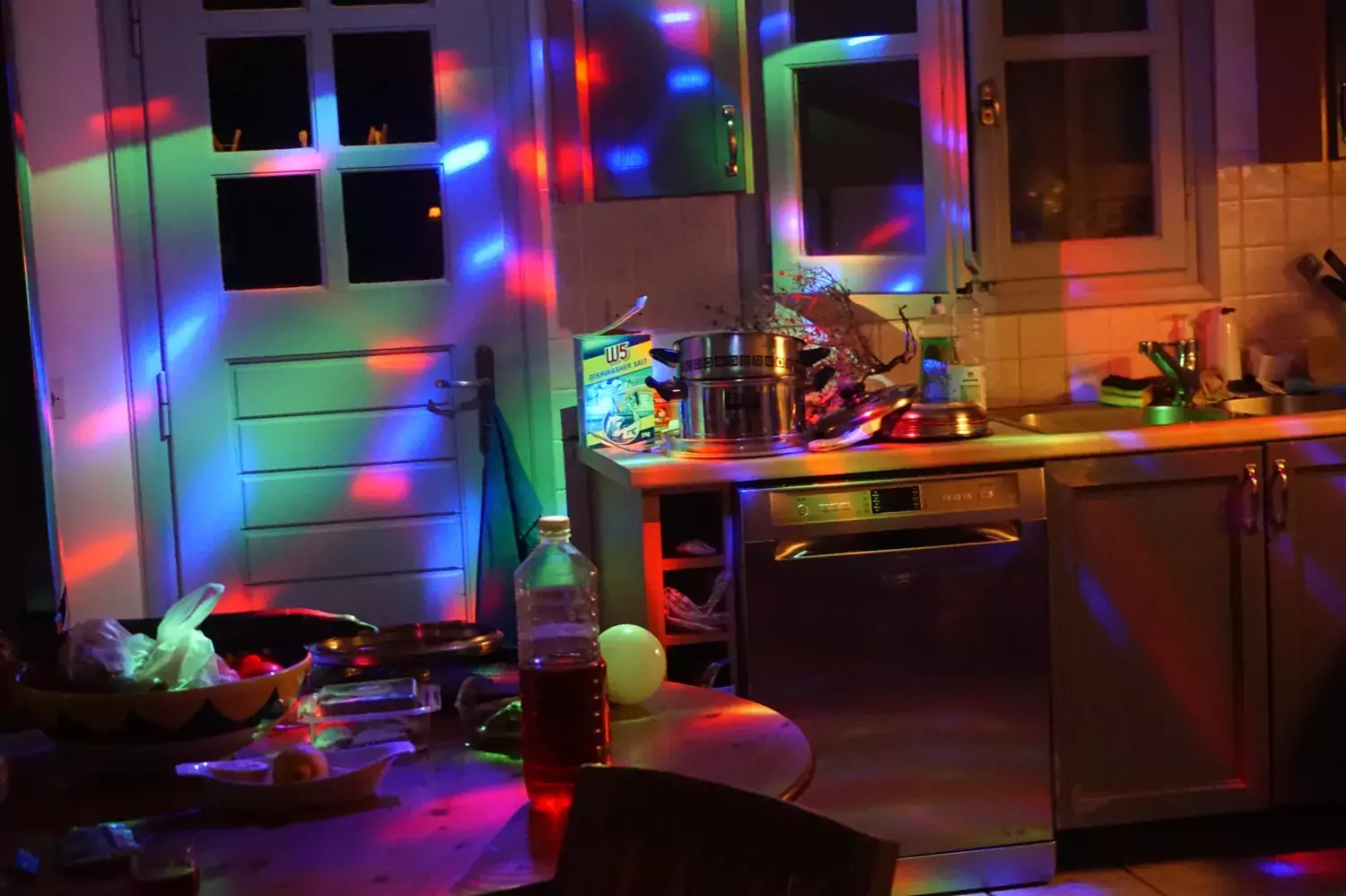
The prefrontal cortex (PFC) in the frontal lobes integrates internally generated information with information from the external world. Prefrontal processing is most important when behavior must be guided by internal intentions (often referred to as goal-directed behavior), and in line with this proper PFC functioning is essential to cognitive processes such as attention, working memory, planning, and decision-making.
In the lab we use systems neuroscience approaches to elucidate how neurons and circuits modulate network activity in the encoding and causation of behavior. We have a strong focus on the prefrontal cortex (PFC) and studies in rodents (mus musculus and rattus norvegicus).
Most projects involve electrophysiological recordings (tetrodes or silicon probes, including Neuropixels) or imaging (microendoscopes, fiber photometry, or 2-photon microscopy) of neuronal activity in behaving animals (head-fixed or freely moving) in combination with circuit tracing and cell-type specific manipulations (optogenetics, genetic). Slice electrophysiology and voltage imaging are used for detailed ex vivo circuit studies.
Our research is rooted in the firm belief that only experiments in relation to behavioral functions can directly address when and how the brain’s circuits exert their unique actions.
The prefrontal cortex
The PFC still lacks a conclusive definition, and the structure and function of this brain area across species remain unresolved. The PFC is implicated in perceptual, emotional, social, motivational, and numerous other brain processes, and is considered to enable cognition and flexible behavior. In following, disturbed PFC functioning has been connected to most, if not all, mental disorders, including drug addiction. Naturally, deciphering of the structure and function(s) of the PFC is of great importance to medicine.
Present-day preclinical researchers increasingly utilize mice (Mus musculus) as model animals. However, lack of understanding of the structure and function of the brain hampers the understanding of which findings are transferable between species. While class-common functions and class-common behaviors involving the PFC have been firmly established, effort must also be put into clarifying dissociations and differences between species. Ultimately, understanding of what makes the human PFC unique will build on comparative studies in different species.
We are utilizing the unique technological toolbox available to studies in mice, with the aim to provide a comprehensive view of the structure and function of the mouse PFC. A blueprint of the mammalian PFC could serve as a source for investigation of homologies between species and shed light on the translational value of studies in distinct species.
The mouse PFC
Large-scale mappings of the connectivity of the mouse cortex indicates the presence of a prefrontal module. Regions within a cortical module display particularly high interconnectivity and are suggested to be dedicated to similar functions. Hodology thus gives support for the presence of a distinct prefrontal region in the mouse brain. However, how hodology and cytoarchitectural features relate to functional features is highly unclear.
The connectivity indicates that the prefrontal module in mice sits on the top of the cortical hierarchy. Further, there is also hodological support for the presence of functional subnetworks within the moue PFC, each being defined by its specific brain connectivity. The presence of subnetworks, high interconnectivity, and a location on the top of the cortical hierarchy collectively strongly suggest that the mouse prefrontal module has a prominent role in feedback and holds both distributed and integrated information processing. These findings align with the theories on what the mammalian PFC is and does.
Our research
Using large-scale Neuropixels recordings in head-fixed mice we are mapping neuronal and network signatures across the layers and subregions of the suggested prefrontal module in a series of tasks engaging distinct brain states and cognitive processes. Our ultimate goal is to characterize neuronal and network activities that define the functional features of the mouse PFC. We have a specific interest in the circuit functions of inhibition and GABA-ergic interneurons, particularly the parvalbumin (PV)-expressing interneurons, and as in our previous work neuronal oscillations are included in our analyses.
Our work also involves long-term electrophysiological recordings of prefrontal activity in freely moving rats. For this we are employing tetrode recordings and optogenetic tagging of select prefrontal cell-types using microdrives and transgenic Cre rats developed in the lab. This enables probing of cognitive processing in conjunction with motoric processing in the PFC.
The generation of complex behaviors depends on the integration of top-down signals from the PFC with action-selection programs in the striatum. How projections from different types of PFC output neurons target and control the striatal circuitry to support cognitive control and decision-making remains unknown. The PFC-Striatum pathway has been implicated as a primary site of circuit imbalance in cognitive and emotional disorders, notably autism spectrum disorder (ASD). In a large-scale project conducted in collaboration with the laboratory of Konstantinos Meletis, KI, we are characterizing PFCs interactions with the striatum, focusing on processing involved in decision-making. This work involves whole-brain circuit tracing, genetic targeting, and registration of neuronal activities using imaging and electrophysiology in behaving mice.
Our behavior needs to dynamically change to adapt to ever-shifting environmental affordances – a process described as learning. An influential theory in both neuroscience and computer science known as reinforcement learning postulates that actions with a positive outcome (e.g., reward) are reinforced, while outcomes with a negative outcome (e.g., punishment) are devalued. The neuronal basis of effective and complex learning in brain-wide circuits remains to be established. One current proposal states that the PFC through its widespread and reciprocal connectivity directs the dynamic and long-term adaptions in synaptic transmission underlying learning processes. Using circuit tracing, 2-photon imaging and Neuropixels recordings in head-fixed mice we are investigating signatures of learning in the mouse PFC and their transmission to downstream sensory cortical areas. The involvement of dopamine signaling is also investigated. This project, as the PFC-striatum project, is part of our efforts to establish how information from the PFC is utilized in downstream brain regions.
Publications
Selected publications
- Article: NATURE NEUROSCIENCE. 2023;26(7):1245-1255Calvigioni D; Fuzik J; Le Merre P; Slashcheva M; Jung F; Ortiz C; Lentini A; Csillag V; Graziano M; Nikolakopoulou I; Weglage M; Lazaridis I; Kim H; Lenzi I; Park H; Reinius B; Carlen M; Meletis K
- Review: ANNUAL REVIEW OF NEUROSCIENCE. 2021;44:547-562Ortiz C; Carlen M; Meletis K
- Review: NEURON. 2021;109(12):1925-1944Merre PL; Ahrlund-Richter S; Carlen M
- Article: JOURNAL OF NEUROSCIENCE. 2021;41(14):3120-3141Guyon N; Zacharias LR; van Lunteren JA; Immenschuh J; Fuzik J; Märtin A; Xuan Y; Zilberter M; Kim H; Meletis K; Lopes-Aguiar C; Carlén M
- Article: JOURNAL OF NEUROSCIENCE. 2021;41(13):2944-2963Guyon N; Zacharias LR; Fermino de Oliveira E; Kim H; Leite JP; Lopes-Aguiar C; Carlén M
- Review: INTERNATIONAL REVIEW OF NEUROBIOLOGY. 2021;158:337-372Jung F; Carlen M
- Article: SCIENCE. 2020;370(6512):eabb8795Llorens-Bobadilla E; Chell JM; Le Merre P; Wu Y; Zamboni M; Bergenstrahle J; Stenudd M; Sopova E; Lundeberg J; Shupliakov O; Carlen M; Frisen J
- Article: SCIENTIFIC REPORTS. 2020;10(1):11838Kim H; Brunner HS; Carlen M
- Article: MOLECULAR PSYCHIATRY. 2019;24(9):1351-1368Lazaridis I; Tzortzi O; Weglage M; Martin A; Xuan Y; Parent M; Johansson Y; Fuzik J; Furth D; Fenno LE; Ramakrishnan C; Silberberg G; Deisseroth K; Carlen M; Meletis K
- Article: NATURE NEUROSCIENCE. 2019;22(4):657-668Ahrlund-Richter S; Xuan Y; van Lunteren JA; Kim H; Ortiz C; Dorocic IP; Meletis K; Carlen M
- Article: CELL. 2018;173(1):153-165.e22Dias DO; Kim H; Holl D; Solnestam BW; Lundeberg J; Carlen M; Goritz C; Frisen J
- Article: NATURE NEUROSCIENCE. 2018;21(1):139-149Furth D; Vaissiere T; Tzortzi O; Xuan Y; Martin A; Lazaridis I; Spigolon G; Fisone G; Tomer R; Deisseroth K; Carlen M; Miller CA; Rumbaugh G; Meletis K
- Article: PROCEEDINGS OF THE NATIONAL ACADEMY OF SCIENCES OF THE UNITED STATES OF AMERICA. 2016;113(4):822-829Berndt A; Lee SY; Wietek J; Ramakrishnan C; Steinberg EE; Rashid AJ; Kim H; Park S; Santoro A; Frankland PW; Iyer SM; Pak S; Ahrlund-Richter S; Delp SL; Malenka RC; Josselyn SA; Carlen M; Hegemann P; Deisseroth K
- Article: CELL. 2016;164(1-2):208-218Kim H; Ahrlund-Richter S; Wang X; Deisseroth K; Carlen M
- Article: JOURNAL OF NEUROSCIENCE. 2015;35(6):2372-2383Rudenko A; Seo J; Hu J; Su SC; de Anda FC; Durak O; Ericsson M; Carlen M; Tsai L-H
- Article: NEURON. 2014;83(3):663-678Dorocic IP; Furth D; Xuan Y; Johansson Y; Pozzi L; Silberberg G; Carlen M; Meletis K
- Article: PLOS ONE. 2014;9(1):e83879Pozzi L; Dorocic IP; Wang X; Carlen M; Meletis K
- Article: JOURNAL OF NEUROSCIENCE. 2013;33(4):1678-1683Szydlowski SN; Dorocic IP; Planert H; Carlen M; Meletis K; Silberberg G
- Review: BRAIN RESEARCH. 2012;1476:31-37Wang X; Carlen M
- Article: MOLECULAR PSYCHIATRY. 2012;17(5):537-548Carlen M; Meletis K; Siegle JH; Cardin JA; Futai K; Vierling-Claassen D; Ruehlmann C; Jones SR; Deisseroth K; Sheng M; Moore CI; Tsai L-H
- Article: ANNUAL INTERNATIONAL CONFERENCE OF THE IEEE ENGINEERING IN MEDICINE AND BIOLOGY SOCIETY. IEEE ENGINEERING IN MEDICINE AND BIOLOGY SOCIETY. ANNUAL INTERNATIONAL CONFERENCE. 2011;2011:7529-7532Siegle JH; Carlen M; Meletis K; Tsai L-H; Moore CI; Ritt J
- Article: PROCEEDINGS OF THE NATIONAL ACADEMY OF SCIENCES OF THE UNITED STATES OF AMERICA. 2010;107(33):14657-14661Forsberg M; Carlen M; Meletis K; Yeung MSY; Barnabe-Heider F; Persson MAA; Aarum J; Frisen J
- Article: CELL. 2010;142(2):184-188Moore CI; Carlen M; Knoblich U; Cardin JA
- Article: NATURE PROTOCOLS. 2010;5(2):247-254Cardin JA; Carlen M; Meletis K; Knoblich U; Zhang F; Deisseroth K; Tsai L-H; Moore CI
- Article: NATURE. 2009;459(7247):663-U63Cardin JA; Carlen M; Meletis K; Knoblich U; Zhang F; Deisseroth K; Tsai L-H; Moore CI
- Article: NATURE NEUROSCIENCE. 2009;12(3):259-267Carlen M; Meletis K; Goritz C; Darsalia V; Evergren E; Tanigaki K; Amendola M; Barnabe-Heider F; Yeung MSY; Naldini L; Honjo T; Kokaia Z; Shupliakov O; Cassidy RM; Lindvall O; Frisen J
- Article: PLOS BIOLOGY. 2008;6(7):e182-1507Meletis K; Barnabe-Heider F; Carlen M; Evergren E; Tomilin N; Shupliakov O; Frisen J
- Article: EXPERIMENTAL CELL RESEARCH. 2006;312(15):2851-2859Carlen M; Meletis K; Barnabe-Heider F; Frisen J
- Article: PROCEEDINGS OF THE NATIONAL ACADEMY OF SCIENCES OF THE UNITED STATES OF AMERICA. 2003;100(13):7925-7930Zhao M; Momma S; Delfani K; Carlén M; Cassidy RM; Johansson CB; Brismar H; Shupliakov O; Frisén J; Janson AM
- Article: EXPERIMENTAL CELL RESEARCH. 2002;279(1):34-39Falk A; Holmström N; Carlén M; Cassidy R; Lundberg C; Frisén J
- Article: CURRENT BIOLOGY. 2002;12(7):606-608Carlén M; Cassidy RM; Brismar H; Smith GA; Enquist LW; Frisén J
- Show more
Robust derivation of transplantable dopamine neurons from human pluripotent stem cells by timed reinoic acid delivery
Alekseenko Z, Dias JM, Adler AF, Kozhevnikova M, van Lunteren JA, Nolbrant S, Jeggari A, Vasylovska S, Yoshitake T, Kehr J, Carlén M, Alexyenko A, Parmar M, Ericson J.
(2022), Nature Communications, 13:3046, https://doi.org/10.1038/s41467-022-30777-8
Reducing pericyte-derived scarring promotes recovery after spinal cord injury.
Dias DO, Kim H, Holl D, Solnestam BW, Lundeberg J, Carlén M, Göritz C*/Frisén J*.
(2018) Cell. Mar 22;173(1):153-165.e22.
An interactive framework for whole-brain maps at cellular resolution.
Fürth D, Vaissière T, Tzortzi O, Xuan Y, Lazaridis I, Spigolon G, Fisone G, Tomer R, Deissoerth K, Carlén M, Miller C, Rumbaugh G. Meletis K.
(2018) Nature Neuroscience. Jan;21(1):139-149
What constitutes the prefrontal cortex? Review
Carlén, M.
(2017) Science. Oct 27; 285(6362):478-82.
Prefrontal parvalbumin neurons in control of attention.
Kim H, Ährlund-Richter S, Wang X, Deisseroth K, Carlén M.
(2016) Cell. Jan 14:164(1-2):208-218
Structural foundations of optogenetics: Determinants of channelrhodopsin ion selectivity.
Berndt A, Lee SY, Wietek J, Ramakrishnan C, Steinberg EE, Rashid AJ, Kim H, Park S, Santoro A, Frankland PW, Iyer SM, Pak S, Ährlund-Richter S, Delp SL, Malenka RC, Josselyn SA, Carlén M, Hegemann P, Deisseroth K.
(2016) Proc Natl Acad Sci U S A. Jan 26;113(4):822-9
The Diameter of Cortical Axons and Their Relevance to Neural Computing. Book chapter
Innocenti GM, Carlén M, Dyrby TB.
(2015) Axons and Brain Architecture. Dec 15. ISBN: 978-0-12-801393-9. Elsevier Inc.
Loss of cyclin-dependent kinase 5 from parvalbumin interneurons leads to hyperinhibition, decreased anxiety, and memory impairment.
Rudenko A, Seo J, Hu J, Su SC, de Anda FC, Durak o, Ericsson m, Carlén M, Tsai L-H.
(2015) Journal of Neuroscience. Feb 11;35(6):2372-83.
A whole-brain atlas of inputs to serotonergic neurons of the dorsal and median raphe nuclei.
Pollak Dorocic I, Fürth D, Xuan Y, Johansson Y, Pozzi L, Silberberg G, Carlén M, Meletis K.
(2014) Neuron. Aug 6;83(3):663-78.
Mice lacking NMDA receptors in parvalbumin neurons display normal depression-related behavior and response to antidepressant action of NMDAR antagonists.
Pozzi L, Dorocic IP, Wang X, Carlén M, Meletis K.
(2014) PLoS One. Jan 16;9(1):e83879.
Target selectivity of feedforward inhibition by striatal fast-spiking interneurons.
Szydlowski SN, Pollak Dorocic I, Planert H, Carlén M, Meletis K*/Silberberg G*.
(2013) Journal of Neuroscience. Jan 23;33(4):1678-83.
A critical role for NMDA receptors in parvalbumin interneurons for gamma rhythm induction and behavior.
Carlén M*/Meletis K*, Siegle J, Cardin J, Futai K, Vierling-Claasen D, Ruhlmann C, Jones S, Deisseroth K, Sheng M, Moore C, Tsai LH.
(2012) Molecular Psychiatry. May; 17(5)537-48
Optogenetic dissection of cortical information processing – shining light on schizophrenia. Review
Wang X, Carlén M.
(2012) Brain Research. Oct 2; 1476: 31-7.
Chronically implanted hyperdrive for cortical recording and optogenetic control in behaving mice.
Siegle JH, Carlén M, Meletis K, Tsai LH, Moore CI, Ritt J.
(2011) Conf Proc IEEE Eng Med Biol Soc.:7529-32.
Efficient reprogramming of adult neural stem cells to monocytes by ectopic expression of a single gene.
Forsberg M*/Carlén M*, Meletis K, Yeung MS, Barnabé-Heider F, Persson MA, Aarum J, Frisén J.
(2010) Proc Natl Acad Sci U S A. Aug 17;107(33):14657-61.
Targeted optogenetic stimulation and recording of neurons in vivo using cell-type-specific expression of Channelrhodopsin-2.
Cardin JA*/Carlén M*, Meletis K, Knoblich U, Zhang F, Deisseroth K, Tsai LH, Moore C.
(2010) Nature Protocols. Jan 21 5(2):247-254
Neocortical Interneurons: From Diversity, Strength. Review
Moore CI, Carlén M, Knoblich U, Cardin J.
(2010) Cell. Jul 21; 142(2):184-88.
Driving fast-spiking cells induces gamma rhythm and controls sensory responses.
Cardin JA*/Carlén M*, Meletis K, Knoblich U, Zhang F, Deisseroth K, Tsai LH, Moore C.
(2009) Nature. Jun 4;459(7247):663-7.
Forebrain ependymal cells are Notch-dependent and generate neuroblasts and astrocytes after stroke.
Carlén M, Meletis K, Göritz C, Darsalia V, Evergren E, Tanigaki K, Amendola M, Barnabé-Heider F, Yeung MSY, Naldini L, Honjo T, Kokaia Z, Shupliakov O, Cassidy RM, Lindvall O, Frisén J.
(2009) Nature Neuroscience. Mar;12(3):259-67.
Spinal Cord Injury Reveals Multilineage Differentiation of Ependymal Cells.
Meletis K*/Barnabé-Heider F*/Carlén M*, Evergren E, Tomilin N, Shupliakov O, Frisén J.
(2008) PLoS Biology. Jul 22;6(7)
Genetic visualization of neurogenesis.
Carlén M, Meletis K, Barnabé-Heider F, Frisén J.
(2006) Exp Cell Res. Sep 10;312(15):2851-9.
Evidence for neurogenesis in the adult mammalian substantia nigra.
Zhao M*/Momma S*, Delfani K, Carlén M, Cassidy RM, Johansson CB, Brismar H, Shupliakov O, Frisen J, Janson AM.
(2003) Proc Natl Acad Sci U S A. Jun 24;100(13): 7925-30.
Gene delivery to adult neural stem cells.
Falk A*/Holmström N*, Carlén M, Cassidy R, Lundberg C, Frisén J.
(2002) Exp Cell Res. Sep 10; 279(1): 34-9.
Functional integration of adult born neurons.
Carlén M*/Cassidy RM*, Brismar H, Smith GA, Enquist LW, Frisén J.
(2002) Current Biology. Apr 2, 12(7): 606-08
Complete list of publications
Staff and contact
Group leader
- Marie CarlenProfessor | Head of department
All members of the group
- Devin BensonResearch Assistant
- Xiao CaoPhd Student
- Marie CarlenProfessor | Head of department
- Joana CatarinoPhd Student
- Katharina HeiningPostdoctoral Researcher
- Hoseok KimResearch Specialist
- Felix JungAffiliated to Research
- Erwin KirschenmannResearch Assistant
- Marina SlashchevaPhd Student
- Ida Välikangas RautioPostdoctoral Studies
- Nannan ZhangResearch Assistant
- Pierre le MerreAffiliated to Research
Contact and visit us
Contact information for the CarlenLab at the Department of Neuroscience, Karolinska Institutet.
Postal address
Karolinska Institutet
Department of Neuroscience
171 77 Stockholm
Visiting address (visitors, couriers, etc.)
Karolinska Institutet
Biomedicum, Quarter B4, Room B0477
Solnavägen 9
171 65 Solna
Delivery address (goods, parcels, etc.)
Biomedicum
Tomtebodavägen 16
171 65 Solna
Map to Karolinska Institutet, Biomedicum, Solnavägen 9
Defended PhD students

Xinming Wang
PhD28 April 2017: "Neuronal circuit mechanisms in decision-making"

Yang Xuan
PhD27 April 2018: "Mapping brain circuits: anatomy, connectivity and function"

Sofie Ährlund-Richter
PhD24 January 2020: "On the neuronal basis of cognition: cell-type specific circuitry and functions of the prefrontal cortex"

Nicolas Guyon
PhD21 May 2021: "On the role of parvalbumin interneurons in neuronal network activity in the prefrontal cortex"

Josina van Lunteren
PhD3 December 2021: "Inhibition in cognition: neurophysiology and connectivity of GABAergic interneurons in the prefrontal cortex"
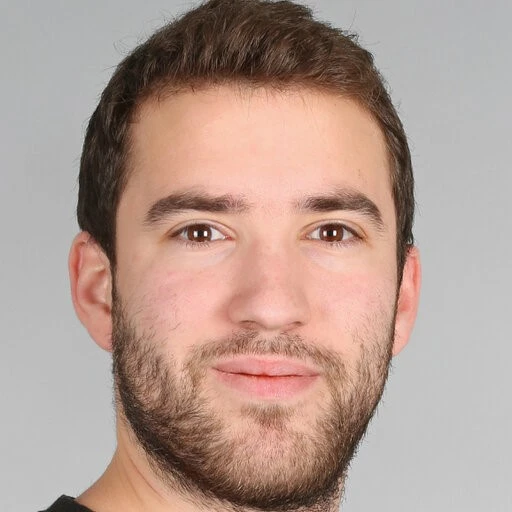
Hans Sperup Brünner
PhD8 June 2024: "Network and behavioral correlates of prefrontal neurons"
Alumni
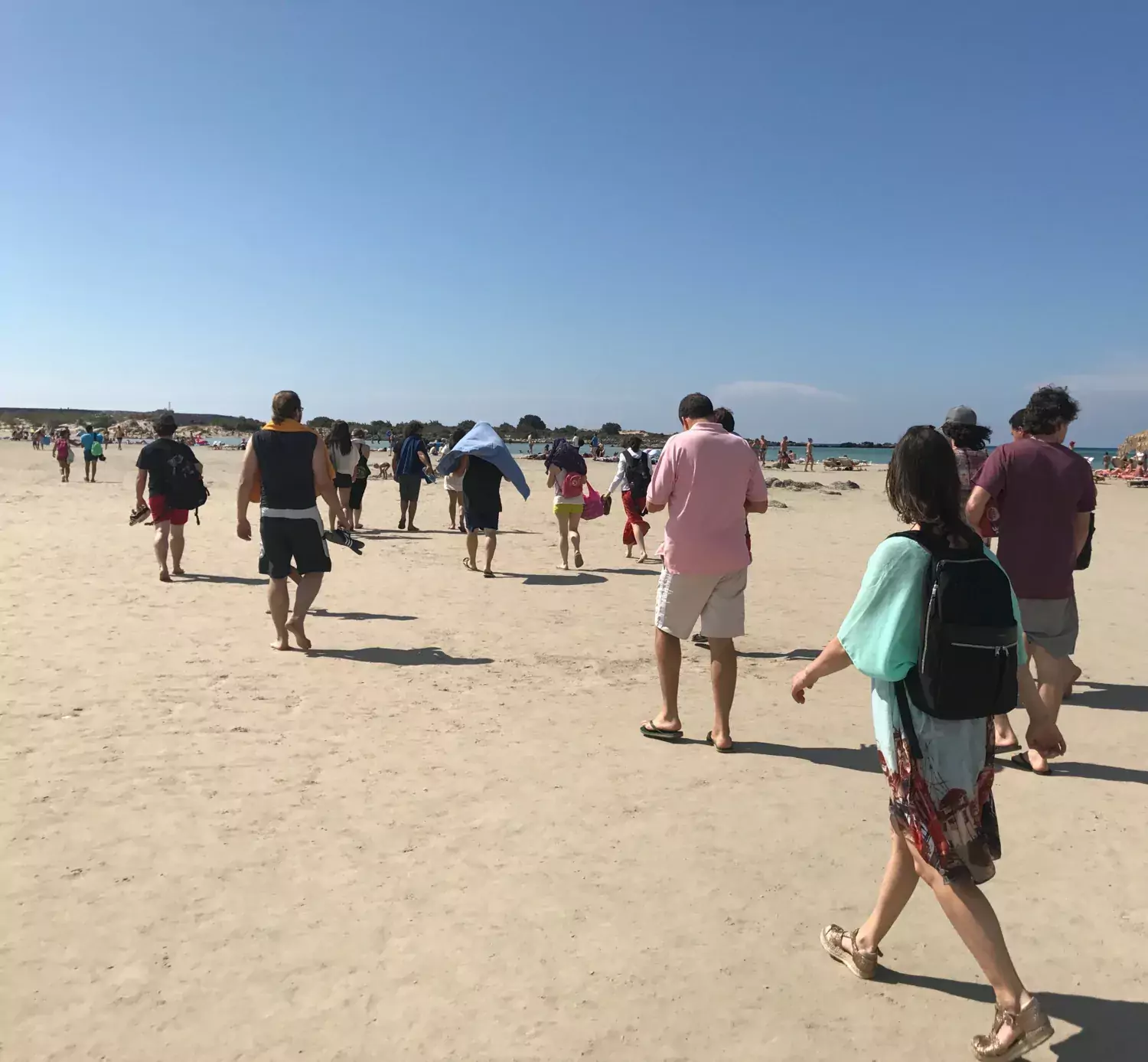
Visiting researchers
- Cleiton Lopez Aguiar, PhD, University of São Paolo, Brazil
- Leonardo Rakauskas Zacharias, University of São Paolo, Brazil
Postdocs
- Charlotte Alme, PhD
- Anna Paula Crestani, PhD
- Ziauddin Darokhan, PhD
- Martin Hägglund, PhD
- Daniel Kaping, PhD
- Åsa Konradsson-Geuken, PhD
- Calvin Young, PhD
Research assistants
- Linn Andréasson, 2023
- Loran Heymans, 2023
- Eleni Moysiadou, 2023
- Sabine Gnodde, 2022
- Angelo Guadagno, 2021
- Cantin Ortiz, 2019
- Fredrik Wernstål, 2019
Master / bachelor students
2022
- Eleni Moysiadou, Stockholm University
- Loran Heymans, Stockholm University
2021
- Gabrielle Dolisie, ENS Lyon, France
- Simon Mayer, Technical University of Munich, Germany
- Mariam Shahata, KI, Sweden
- Moritz Stingl, University of Heidelberg, Germany
2020
- Gregor Ehmer, Stockholm University, Sweden
- Karyn Lewis, KI, Sweden
- Ram Yahya, Stockhom University, Sweden
2019
- Laura Heezen, University of Utrecht, The Netherlands
- Jana Immenschuh, Stockholm University, Sweden
- Agnieszska Limiszewska, Stockholm University, Sweden
- Hyunsoo Park, KI
2018
- Emily Cox, University of Calgary, Canada
- Cantin Ortiz, Royal Institute of Technology (KTH), Sweden
- Leonardo Rakauskas, University of São Paolo, Brazil
- Yicheng Wu, KI, Sweden
2017
- Joseph Clerke, University of Glasgow, Scottland
- Lovisa Franzén, Stockholm University, Sweden
- Michal Miazga, University of Warsaw, Poland
2016
- Leonidas Georgiu, University of Glasgow, Scottland
- Laura Heikkinen, KI, Sweden
- Solmaz Yazdani, KI, Sweden
2015
- Charlotta Henningson, University of Edingburgh, Scotland
2013
- Marieke Oudelaar, KI, Sweden
2012
- Cilla Gottfries, KI, Sweden
- John-Peter Vinnars, KI, Sweden
- Chan Shi Yu, National University of Singapore, Singapore
Work with us
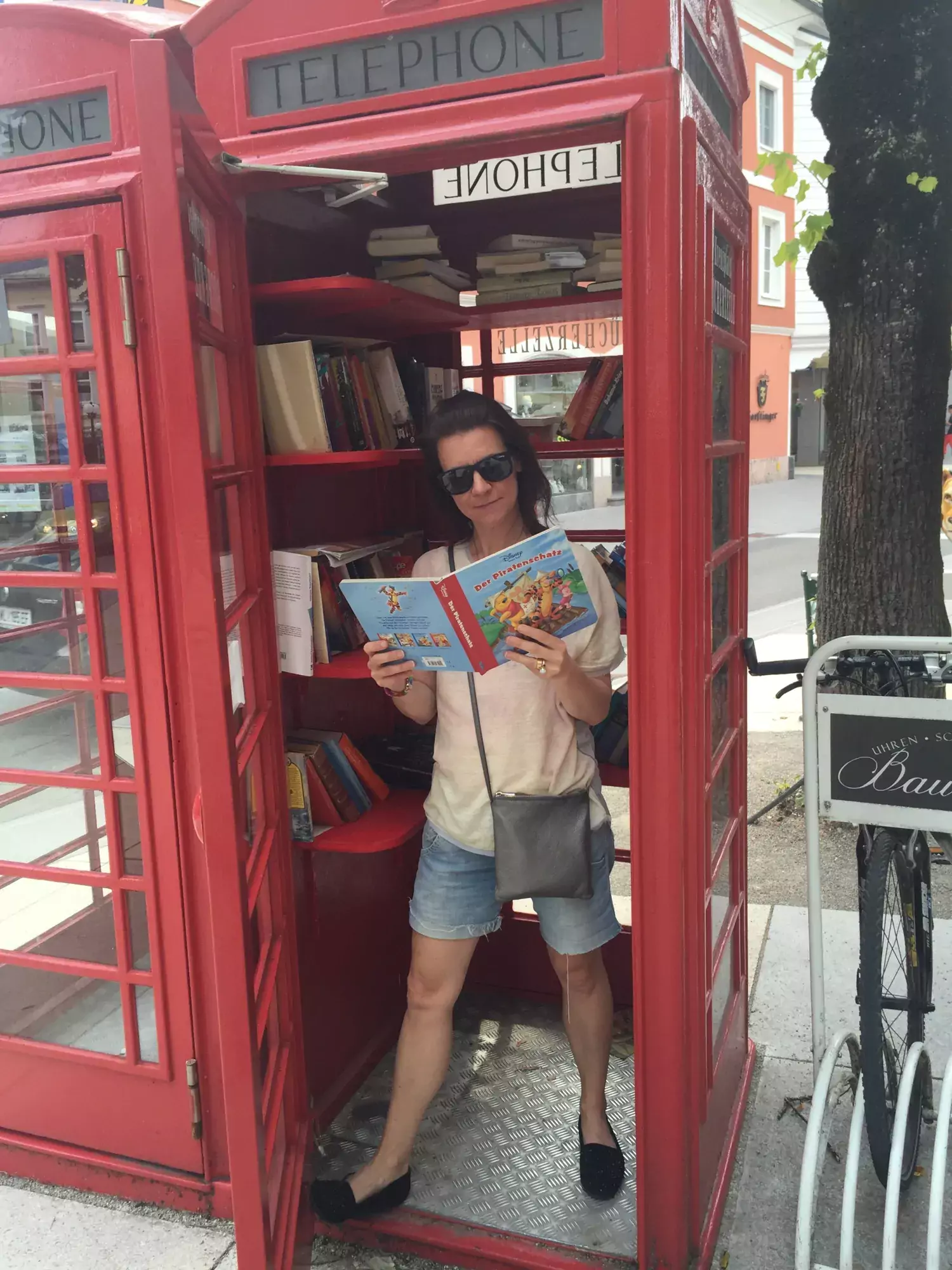
Work with us
We are always looking to extend our team!
If you are interested in joining the CarlenLab, please send an email to Marie Carlén at marie.carlen@ki.se with a cover letter describing your education, experience, and expertise relevant to the lab’s research. Please also let us know what your career goals are and what you hope to achieve in the CarlenLab.
Name and full contact information for 2-3 references ready to submit reference letters upon request is also highly appreciated.
Applications at all levels are welcome!